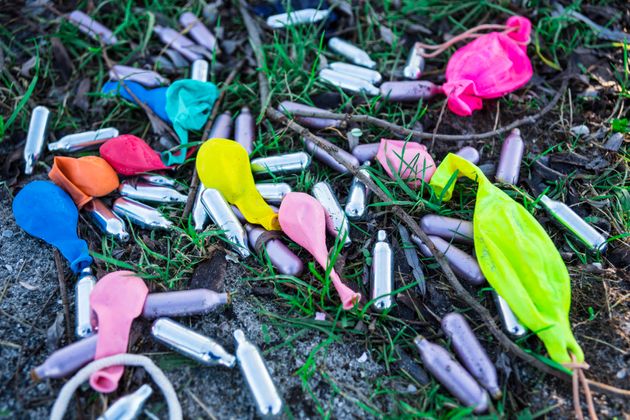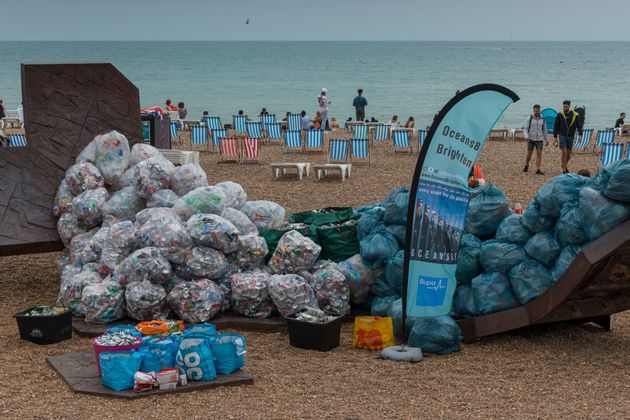
Laughing gas canisters – those small, steel bottles – are often found littering curbs, parks, and after recent Pride celebrations, Brighton beach.
Nitrous oxide, found inside the canisters, is among the top 10 most used drugs worldwide, according to the 2019 Global Drug Survey. It’s also the second most commonly used recreational drug in England and Wales after cannabis.
The colourless gas is usually transferred from a canister into a balloon and then inhaled, with the empty vessels thrown on the floor. But not everyone is aware of the devastating impact this can have on wildlife and the environment.
Environmental podcaster, Clare Osborn, who hosts Clare Talks Rubbish, is a member of Ocean’s 8 Brighton – a group of women with expertise in environmental issues. Osborn spent a lot of time litter-picking canisters and balloons on Brighton beach during a clean-up after this weekend’s Pride.
“Canisters are not a beach clean issue, they’re not a Pride issue either – they’re a party people issue,” she says, nodding to music festivals such as Glastonbury where balloons are also commonly used.

So, Why Are They So Bad For The Environment?
Not only is it littering to leave canisters behind, but the balloons often used with them can have a deadly impact on local wildlife. Dr Alex Bond, senior curator in charge of birds at the Natural History Museum, says when the balloons and other plastic debris enter the ocean, birds often mistake them for food.
“When the plastics are ingested, they can accumulate in the birds’ guts where they can transfer harmful chemicals, perforate the stomach wall, and give the birds a fall sense of being full, as well as displacing actual food,” he explains.
“So we regularly see chicks that are severely underweight with large amounts of plastics [in their bodies], and their survival prospects are not good.”
Balloons are particularly problematic because they aren’t “rigid plastics”, he says, and therefore block the gut. Between 80-90% of flesh-footed Shearwater chicks – the seabirds he works with in Australia – have plastic in their stomachs.
Osborn and a team of 1,000 volunteers who took part in the big clean-up after Brighton Pride spent time separating the canisters and balloons because, as Osborn puts it, “these canisters are made from steel, they are recyclable”. But they are usually thrown into bin bags, and ultimately end up in landfill.
What Are Campaigners Doing Next?
A staggering 150kg of the metal litter-picked from the beach was empty nitrous oxide gas canisters, while the team also collected 4kg of balloons.
“Nitrous oxide canisters are made from steel which, due to their design, cannot be refilled, but can be recycled in multiple facilities in the UK,” says Claire Potter, who runs a Brighton-based circular economy consultancy.
“Recycling metals is a great example of a circular economy [which aims to minimise waste and make the most of resources] as it reduces the amount of raw virgin metal ores that have to be excavated to produce ‘new’ metal. Many metal products already contain large amounts of ‘recycled’ content.”
Brighton Pride itself doesn’t take place on the beach, but it still sponsors the post-party clean-up. Two tonnes of rubbish was collected from the beach, with 1.5 tonnes sent to be recycled through Terracycle.
A local artist is going to use some canisters to create art. And campaigners have kept the balloons to use for future campaigning material – otherwise, they would have been broken down into micro-plastics and could have potentially entered the waterways.
Osborn said this year’s clear-up, which saw hundreds of people from all walks of life gather to help protect the environment, was “really humbling”.


